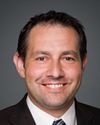Thank you for the question.
That $1.9 million is actually for transfers from partner organizations, mainly Environment Canada for weather services renewal, and a small amount for the Department of National Defence. There was an $865,000 transfer for Transport Canada, and amounts for Industry Canada and Infrastructure Canada.
Those amounts are separate from the $18 million in voted appropriations and the $38 million in transfers because that money had already been appropriated to those departments for the initiatives in question. So it does not represent new funding but, rather, transfers between departments.
That is why the amounts for these projects appear separately.
I'm not sure whether that is clear.




